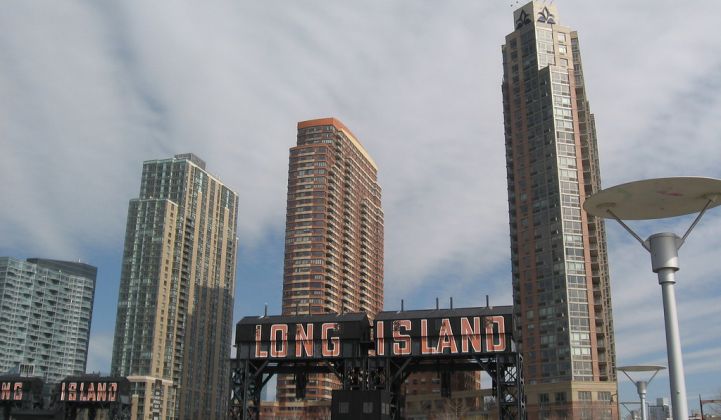New York’s Long Island Power Authority this week upped the incentives offered to community solar projects in its territory, providing some concessions to solar developers but ultimately falling short of what the industry said it needed to provide the certainty to finance projects there.
Going forward, LIPA will offer a 5-cent-per-kilowatt-hour “community credit,” up from the planned 2.25-cent credit, for all community solar projects. As further encouragement, community solar projects under 750 kilowatts will also get a $200-per-kilowatt rebate.
The credit will increase the value that community solar projects receive under New York’s Value of Distributed Energy Resources tariff, which quantifies project incentives based on a complex formula of stacked benefits including location and demand reduction. Long Island’s community solar market began using the VDER calculations in January.
The state chapter of the Solar Energy Industries Association called LIPA’s tweaks “significant steps” toward realizing the potential of Long Island’s community solar market. But the industry did not get everything it asked for. Solar entrepreneurs on Long Island had hoped for a credit of 10 cents per kilowatt-hour, comparable to the incentive level offered in the service territory of utility Consolidated Edison, which serves New York City.
Though the credits are lower than the industry asked for, David Schieren, CEO at local developer EmPower Solar, said the increase will help "re-establish a viable marketplace."
Community solar remains a small part of New York's solar market, and that's equally true on densely populated Long Island.
Long Island has already installed 80 percent of the 750 megawatts it needs to meet its portion of New York’s plans to add more than 6 gigawatts of distributed solar by 2025. Just 3 megawatts of Long Island’s total is community solar, with 34 megawatts in the pipeline (the entire state has a cumulative 88.5 megawatts of community solar installed, according to Wood Mackenzie Power & Renewables data through Q3 2019). Solar advocates attribute the area’s small proportion of the state's total to its lackluster incentives for community projects.
The reworked community credit isn’t the only boost LIPA recently offered to the sector. In the autumn of 2019, when LIPA and solar developers were hashing out disagreements on incentives, LIPA introduced its Long Island Solar Communities program, which includes 25 megawatts of community solar, with the first 20 megawatts dedicated to low- and moderate-income subscribers. It offers 7 percent bill savings to participants.
This month, LIPA said it will consider expanding that program to 40 megawatts and review its community credit based on the results of an auction for that program, which will be held in Q4 of this year.
Overall, tensions between the industry and LIPA seem to be easing, with plans to continue reassessing the credits. Going forward, the two stakeholders will hold bimonthly working groups to review LIPA’s community solar programs.
This story has been updated with comment from EmPower Solar and to reflect that WoodMac's data is through Q3 2019.




